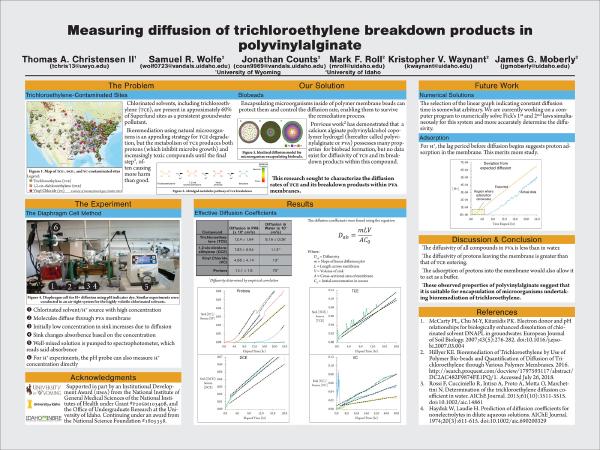Kristopher v. Waynant
Latest Activity
SubscribeBioremediation of chlorinated aliphatic hydrocarbon-contaminated aquifers can be
hindered by high contaminant concentrations and acids generated during
remediation. Encapsulating microbes in hydrogels may provide a protective,
tunable environment from inhibiting compounds; however, current approaches to
formulate successful encapsulated systems rely on trial and error rather than
engineering approaches because fundamental information on mass-transfer
coefficients is lacking. To address this …

Trichloroethylene (TCE), a toxic and carcinogenic contaminant, presents unique
challenges for cleanup because of its water solubility, density, and volatility.
Bioremediation of TCE is a promising cleanup method; however, metabolism of TCE
results in acid generation that inhibits remediating microorganisms. Calcium
alginate(CA)-polyvinylalcohol (PVA) hydrogels show promise for protecting
remediating microbes, however diffusion of TCE or its byproducts through these
polymers is unknown. To …